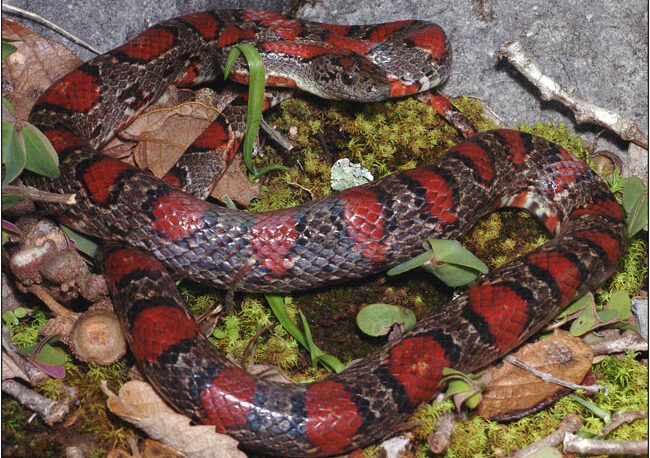
Field photo of adult mexicana from Alvarez, SLP.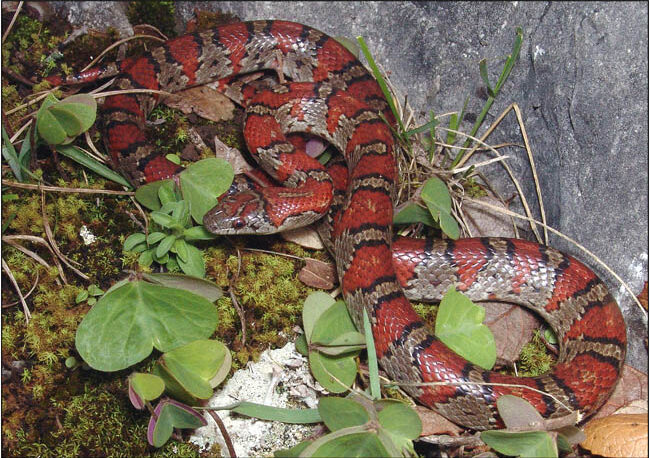
Field photo of adult mexicana from the Valle de los Fantasmas, SLP. 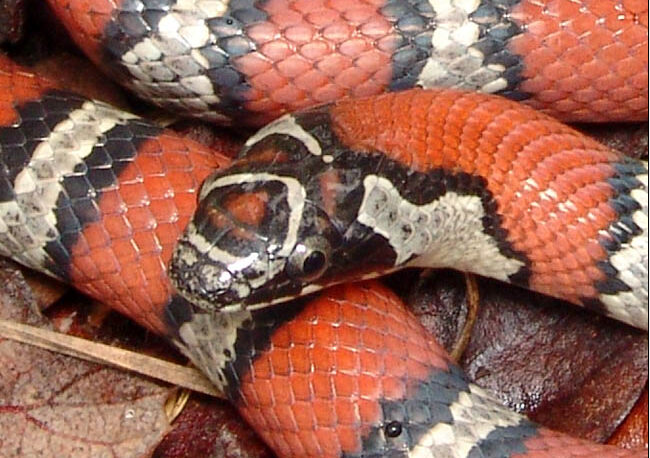
Head closeup of the snake in the preceding photo. Head “ornamentation,” so characteristic of this species, looks a bit different compared to the Alvarez-Valle de los Fantasmas animals.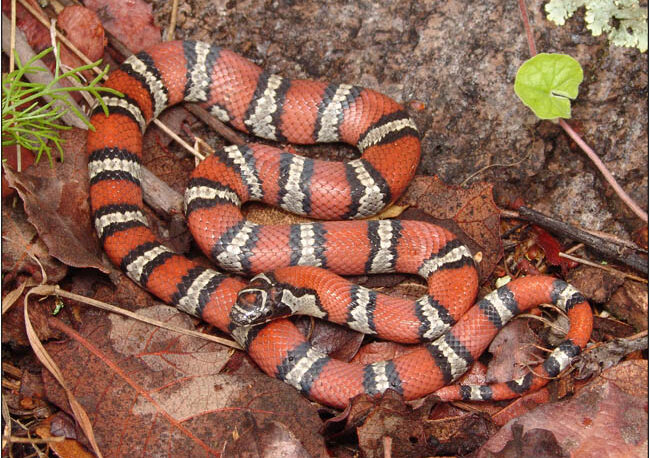
Field photo of small adult mexicana from the vicinity of Guadalcazar, northern San Luis Potosí, presenting an appearance that differs from that seen in the Alvarez-Valle de los Fantasmas populations. 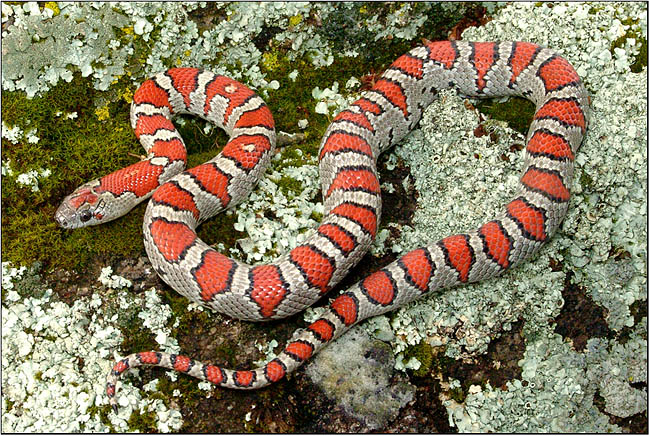
Yearling male offspring of female in preceding photo. The solid nuchal blotch is unusual for snakes in this population. 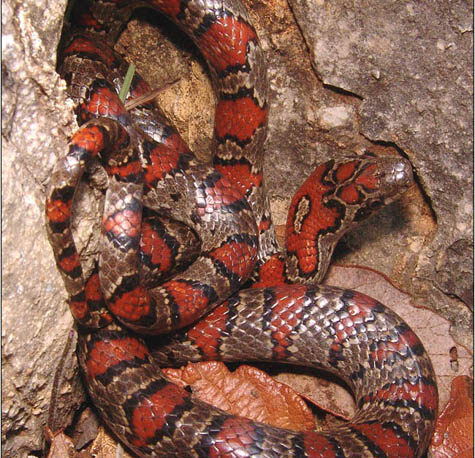
Field photo of adult mexicana from the Valle de los Fantasmas, SLP. 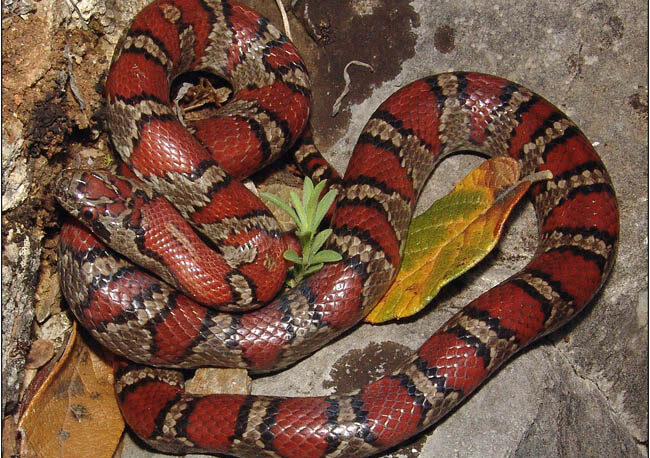
Field photo of adult mexicana from the Valle de los Fantasmas, SLP.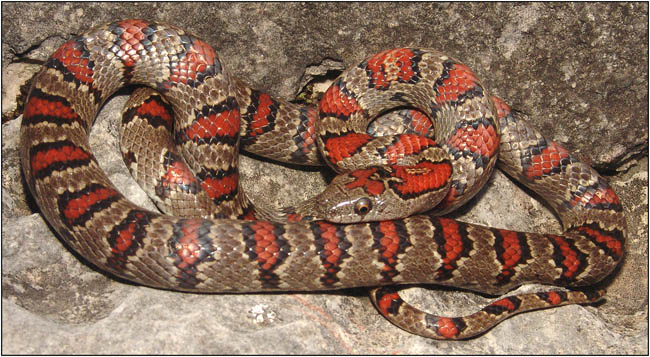
Field photo of young adult mexicana from the Valle de los Fantasmas, SLP. The brown ground color was somewhat unusual, but is present among some captive lines. This snake was first observed in a rock crevice.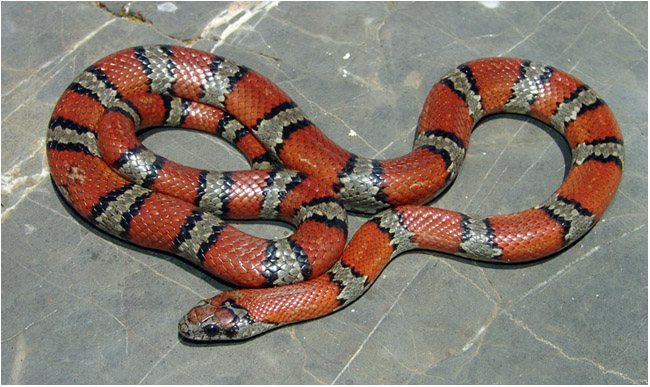
Description
Field photo of an adult mexicana from near Guadalcazar, SLP. Compare this specimen to the juvenile shown in this gallery from the same locality. Collectively, these two individuals have fewer and more elongated red blotches/bands compared to mexicana farther south. Photo © 2009 Jason Jones.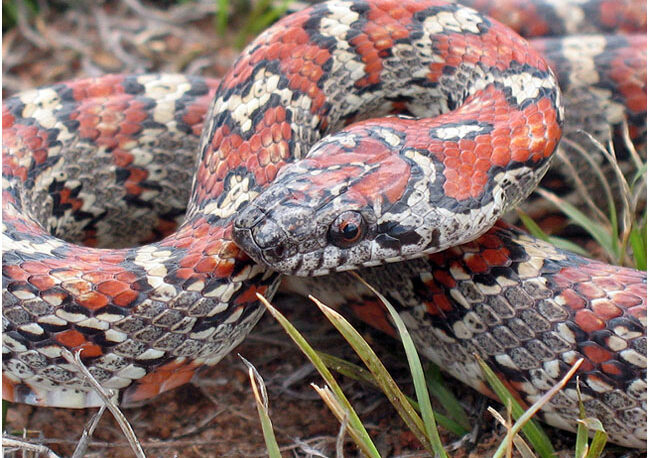
Closeup of same specimen shown in preceding photo. Photo courtesy of Eric Centenero Alcalá.
Field photo of an adult mexicana from northeastern Guanajuato, elev. ca. 7430 ft (2264 m). 13 June 2008. Photo courtesy of Eric Centenero Alcalá. 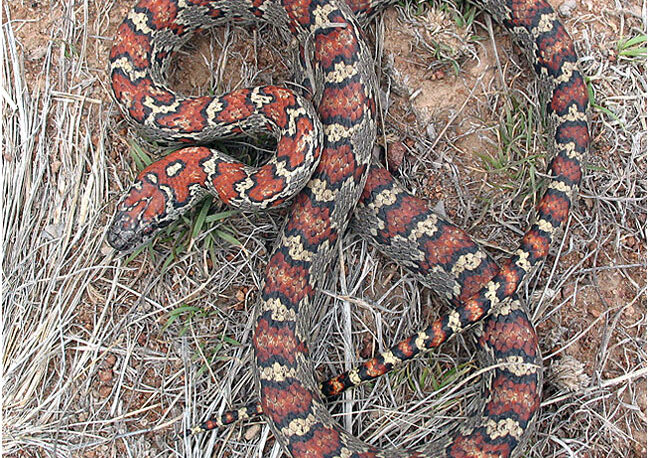
Dorsal view of same specimen as in preceding image. Photo courtesy of Eric Centenero Alcalá.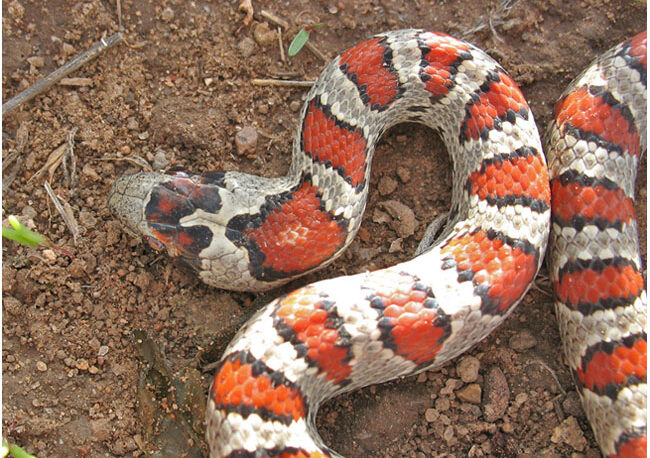
Although mexicana often are characterized by unique head markings, the pattern seen in this Guanajuato snake is unusual. Same specimen as depicted in previous two images. Photo courtesy of Eric Centenero Alcalá. 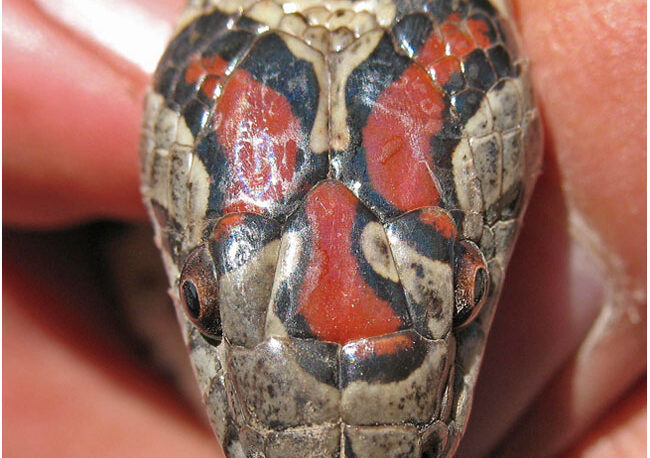
Closeup illustrating the unique (and uniquely variable) head markings that characterize specimens of mexicana. Same snake as shown in preceding photo. Photo courtesy of Eric Centenero Alcalá.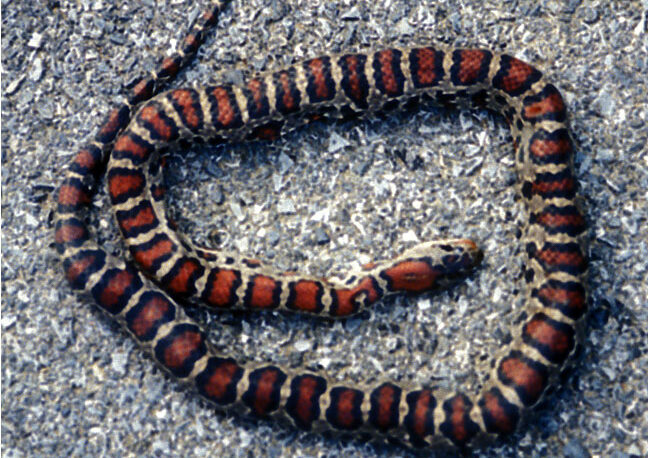
DOR mexicana from Valle de los Fantasmas, SLP, found by Randy Limburg in 1991, now in the UANL collection (UANL 5603). Photo courtesy of G. Salmon.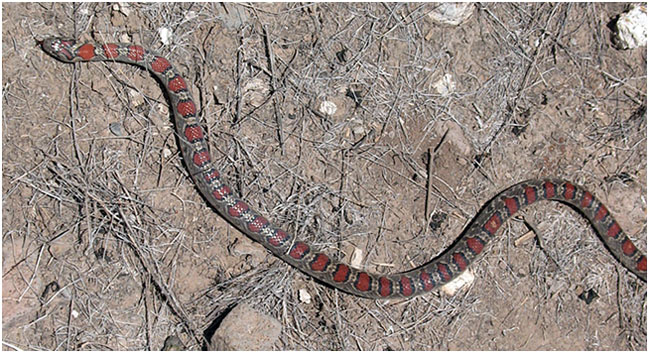
Field photo of an adult mexicana from northeastern Guanajuato, elev. ca. 7430 ft (2264 m). 19 June 2008. Photo courtesy of Eric Centenero Alcalá. 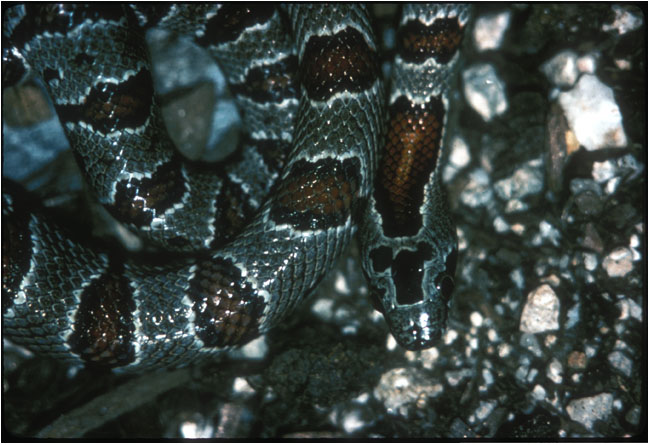
Specimen from near Cd San Luis Potosí by H. D. Wallace, 12 June 1975. Photo courtesy of G. Salmon. 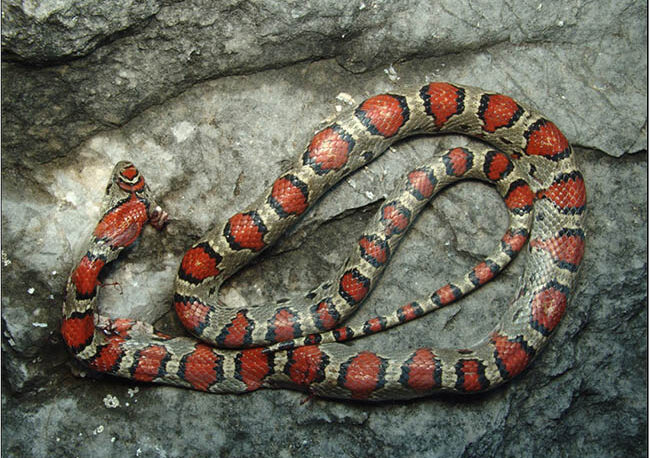
DOR adult mexicana, Hwy 70 east of Cd. San Luis Potosí. To see the corresponding habitat photo, refer to Slide No. 8 in the Armadillo de los Infantes habitat gallery. Photo © 2006 by Jason Jones.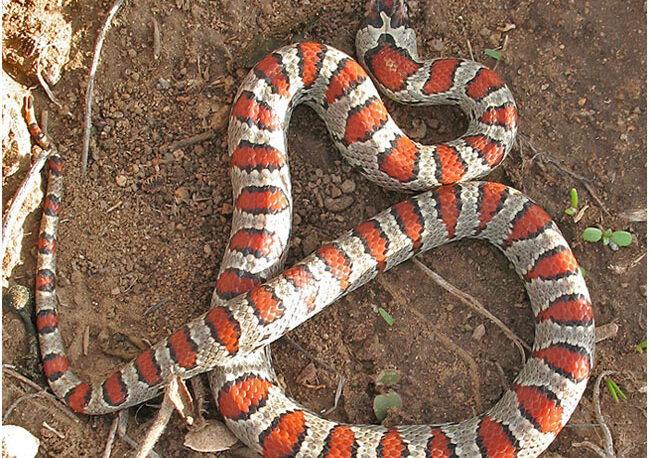
Field photo of an adult mexicana from northeastern Guanajuato, elev. ca. 7430 ft (2264 m). Summer 2008. Photo courtesy of Eric Centenero Alcalá. 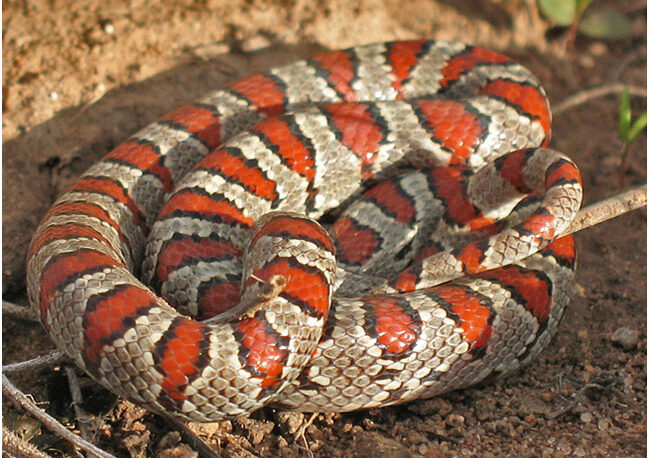
Another view of the same adult mexicana from northeastern Guanajuato shown in previous image. The dorsal pattern is a departure from those seen in the best known of the San Luis Potosí populations. Notably, the dorsal saddles are solid orange-red, more or less uniform in shape, with even black borders. Contrast this pattern with that of the second snake depicted from this same population. Photo courtesy of Eric Centenero Alcalá.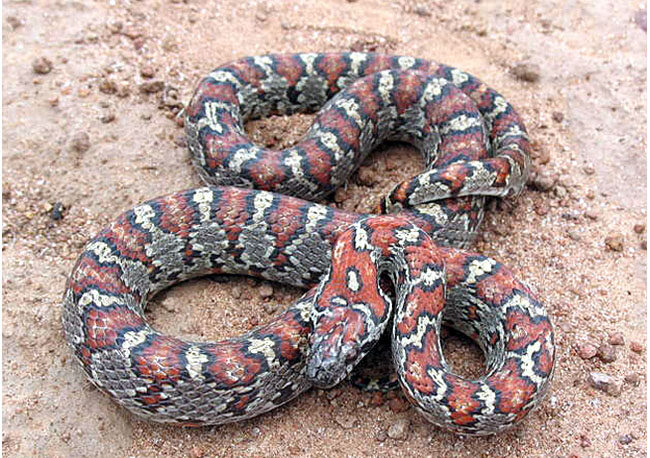
Field photo of an adult mexicana from northeastern Guanajuato, elev. ca. 7430 ft (2264 m). Based on coloration and pattern, this individual would fit easily into the Valle de los Fantasmas population in San Luis Potosí. 13 June 2008. Photo courtesy of Eric Centenero Alcalá. 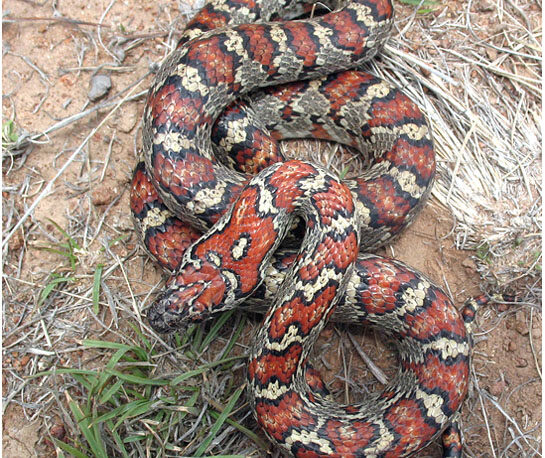
Dorsal view of same specimen as in preceding image. Photo courtesy of Eric Centenero Alcalá. 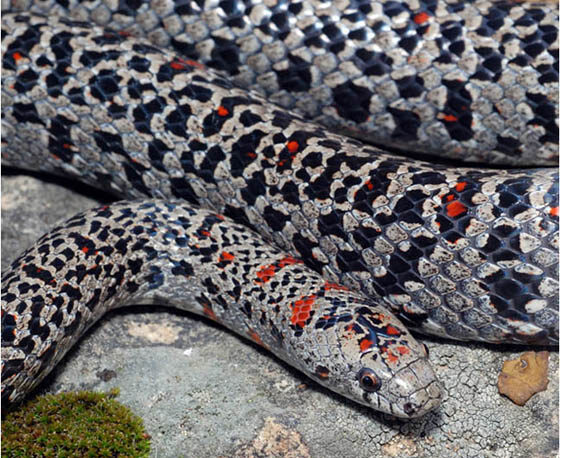
Adult male ultra-granite morph, the result of selective breeding for extreme speckling. 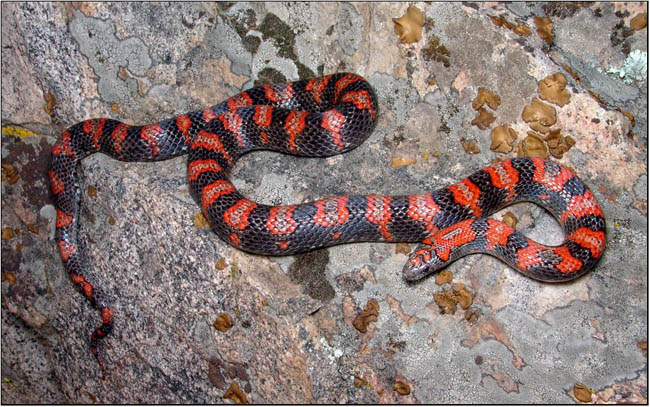
Young adult “black phase” mexicana female, at age 29 months. In black phase animals, the ground color becomes gray-black as the snake transitions from hatchling to adult. Captive specimen.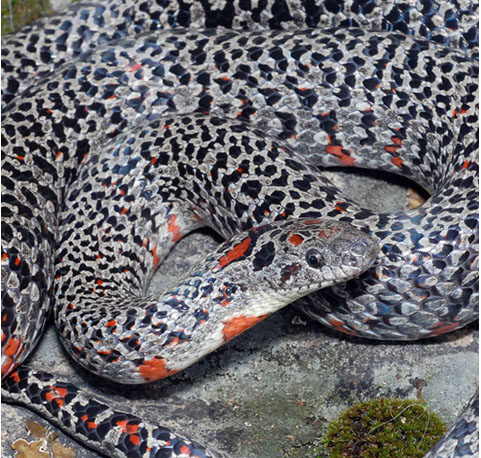
Adult female ultra-granite morph, showing the typical pattern whereby females exhibit a more extreme speckling relative to males. 
Large adult male mexicana, captive Valle de los Fantasmas stock. 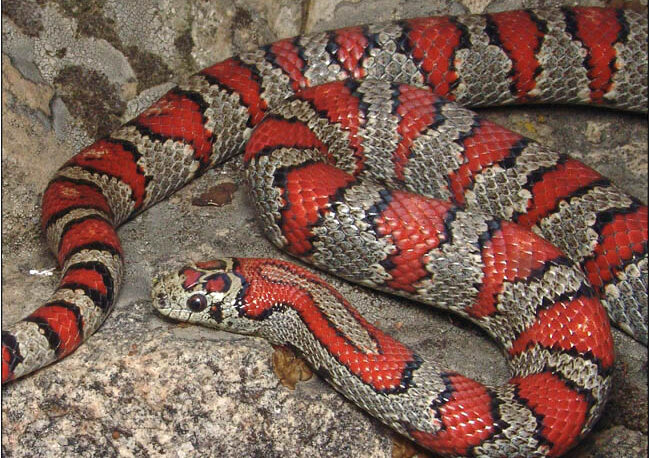
Adult male with classic trifoliate head markings and elongated nuchal blotch. Captive animal, Valle de los Fantasmas stock. 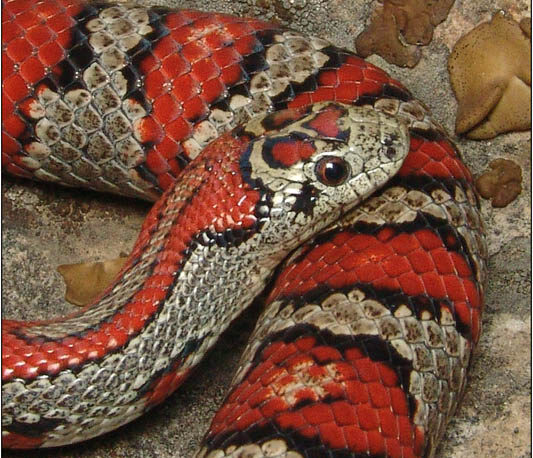
Adult male with classic trifoliate head markings and elongated nuchal blotch. Captive animal. 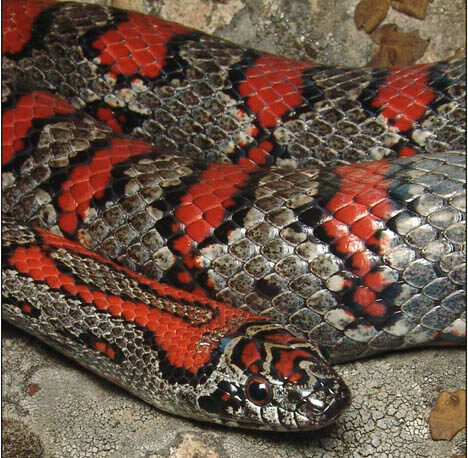
This adult female illustrates two features common to most mexicana from the Valle de los Fantasmas population: the elongated nuchal blotch with central longitudinal opening, and the multi-part head markings. Captive animal. 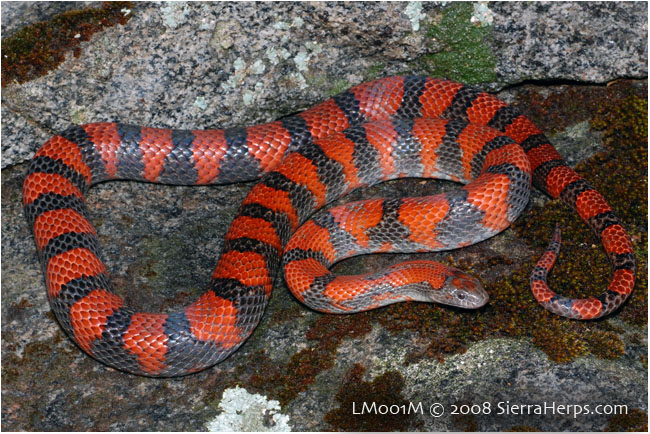
Captive adult male black phase mexicana, nicely displaying the brightly contrasting colors typical of adults. 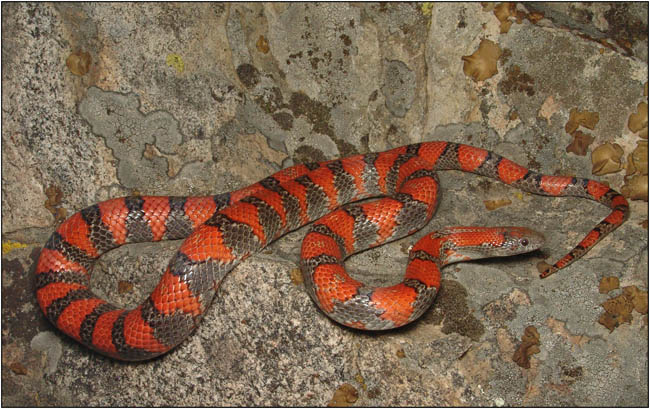
Subadult male “black phase” mexicana. In these, the ground color becomes gray-black as the snake transitions from hatchling to adult. Captive animal. 
Adult female mexicana, Valle de los Fantasmas captive stock. Note than in females the dorsal blotches typically do not extend as far laterally as is the case in males.
Ventral view of the snake depicted in preceding two photos. 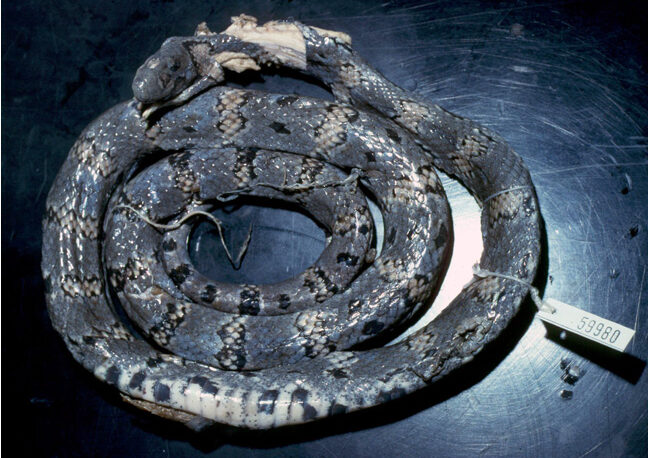
This specimen (CM 59980), tentatively allocated to L. mexicana, was collected in August 1970 by David Morafka, and is discussed by Garstka (1982, p. 20). This snake was found ca. 52 miles WNW of Cd. San Luis Potosí, SLP, just W of the border with Zacatecas, at an elevation of ca. 7600 ft. The habitat, consisting of stunted creosote bush, cacti, and short grasses, is not typical of better known localities of mexicana farther east. The specimen is noteworthy also in that it is the most northwestern record for the species, and its color pattern (at least in preservative) is unusual compared to the majority of mexicana specimens found elsewhere. Photo by W. Garstka, courtesy of Joseph E. Forks. 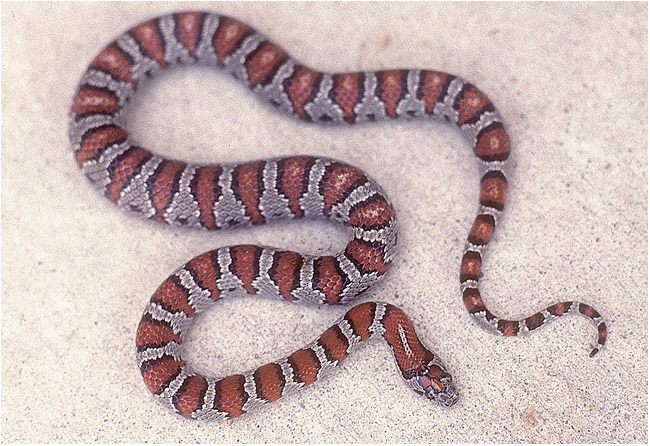
Adult mexicana collected by Gary Sipperly, October 1983, in San Luis Potosí. Photo by Gary Sipperly, courtesy of David G. Barker.
